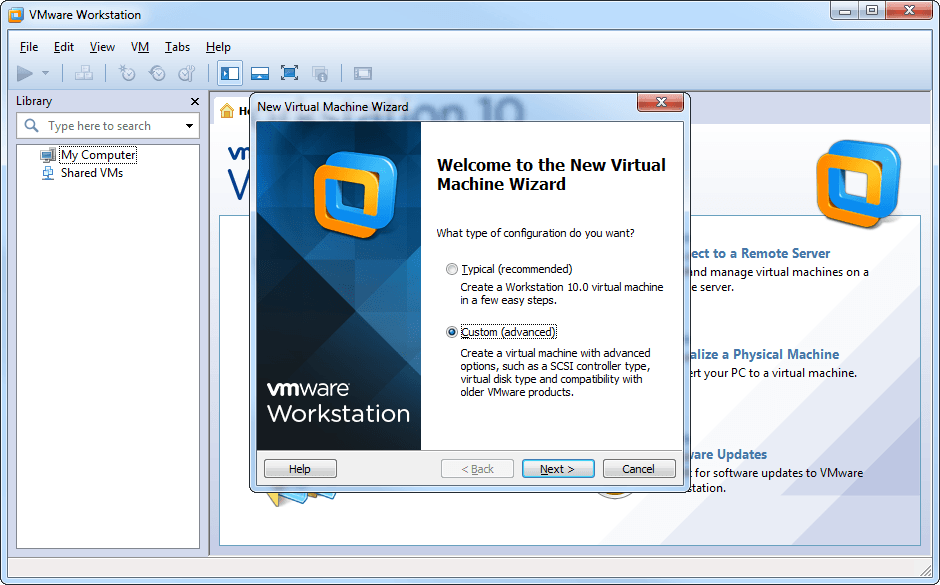

- #Windows 10 vmware vs virtualbox install
- #Windows 10 vmware vs virtualbox windows 10
- #Windows 10 vmware vs virtualbox software
- #Windows 10 vmware vs virtualbox license
Good luck getting a 2008R2 -> 2012 migration done quickly.ĮSXi has real performance monitoring built in, so I can troubleshoot latency etc with ease. If you don't like the internet, a reboot and 15-20 minutes with a USB drives and you can be on a new version.
#Windows 10 vmware vs virtualbox install
I would like to point out that Free ESXi has some great features Hyper-V Doesn'tĪ single command I can do a full major version upgrade (pull down and install packages from VMware's repos) in place without having to reformat my VM's or do anything else weird. This really isn't an argument an argument against VMware free, so much as one pointing out a weakness of Hyper-V (even at scale).
#Windows 10 vmware vs virtualbox software
Even If I pay more I'm stuck with my backup software having to engineer one ( Veeam has done this) or my backup software doing a full differential read of the VM to perform a backup (Which leads to far longer backup windows). Where the VACB API stuff comes into play is when your backing up over block networks with shared storage, at scale, and want to leverage VMware's changed block tracking API (Hyper-V doesn't have one. VMware charges ~$200 a host with essentials ($600 for 3 hosts) for its VACB. (Unitrends Free edition works with ESXi free edition) and most SMB backup tools (Datto, shadow protect etc) work just fine here. Most people using it (small scale) use in guest agents that work "just fantastic". You can backup VM's that are hosted on ESXi free without an issue. Hyper-V has no such limitations.Apples/Oranges. If you want advanced features like backups with VMWare, you'll have to pay extra. Yes, but you can use all of the features of Hyper-V, whereas ESXi's free version is comparatively limited.
#Windows 10 vmware vs virtualbox license
Interestingly, I've not seen many instances of people thinking the DC license only worked on Hyper-V, but that doesn't mean they aren't out there.

You can use this with ESXi, KVM, Xen all of which are free. The myth that Datacenter gives Hyper-V alone this advantage is oddly the largest reason Hyper-V exists. Right now we have about 8 servers running under Hyper-V, and 3 or 4 client systems, all virtualized. We have a little "monster" we call the "Frankenserver" with 24-cores total for processing, 9Tb RAID disk space and 128Gb of RAM. With a 2012 Datacenter license, you can create/use as many Hyper-V VMs using Windows OSes as your resources permit, which for us is a big plus. At work, we use Hyper-V, its already there, integrates literally transparently with your existing domain/network infrastructure, and is easy to use. Then click ok.Personally I have used both Virtualbox and VMWare Workstation for non-production stuff. Then click on “Turn Windows features on or off” and uncheck the Hyper-v checkbox.

✔️ open “Control Panel\All Control Panel Items\Programs and Features” Create a new value with the name EnableVirtualizationBasedSecurity. To do it, navigate to the section HKEY_LOCAL_MACHINE\System\CurrentControlSet\Control\DeviceGuard. ✔️ Open the Registry Editor by pressing the shortcut Win+R and typing “regedit” in the Run window. Then i found this video which solved the problem: Then I disabled hyper-v and tried using Vmware but I got this error message : “VMware Workstation and Device/Credential Guard are not compatible”.Īfter trying every possible solution of google results. But we can only use one thing at a time either vmware/virtualbox or hyper-v. As it a type 1 hypervisor, there must be performance improvement and no doubt there was visible difference.
#Windows 10 vmware vs virtualbox windows 10
But I decided to try out Hyper-V technology shipped with Windows 10 pro. Fully Disable Hyper-V to turn back to vmware/virtualbox.


 0 kommentar(er)
0 kommentar(er)
